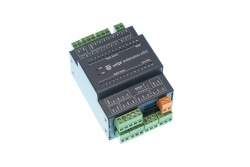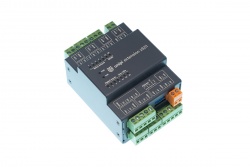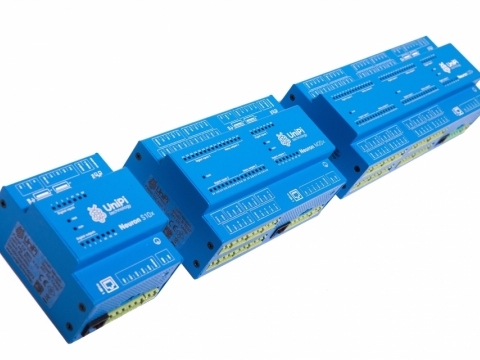
29/2/20 Unipi.technology introduces the Unipi Extension xS11 and xS51 - the second generation of Unipi Extension modules.
Unipi Extension modules represent an easy and inexpensive way to extend your automation project by additional inputs & outputs. Modules communicate using the Modbus RTU protocol and RS485 serial interface and can be connected to both Unipi Neuron and Unipi Axon controllers, as well as PLCs from other vendors.
The second generation of extension modules
Four Unipi Extension modules have been originally available - xS10, xS30, xS40 and xS50.
| Digital inputs | Relay outputs | Analog inputs | Analog outputs | |
| xS10 | 16 | 8 | - | - |
| xS30 | 24 | - | - | - |
| xS40 | 8 | 14 | - | - |
| xS50 | 6 | 6 | 4 | 4 |
This first generation of Unipi extensions will be now replaced by its development successors - Unipi Extension xS11 and xS51.
| Unipi Extension xS11 | Unipi Extension xS51 |
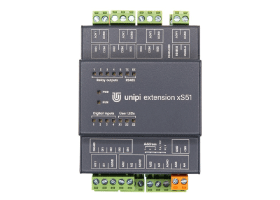 |
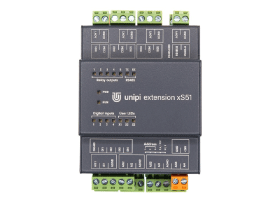 |
|
- 12 × digital inputs |
- 4 × digital input |
| Display on e-shop | Display on e-shop |
These new models were designed as a full-fledged replacement of all first-generation Unipi Extension modules. The new models retain the compact size, durable aluminium chassis with IP20 protection and an excellent price per I/O. As a new feature, both new models have an updated graphics design, making them easily distinguishable from other Unipi products. Both xS11 and xS51 are already available for orders.
The xS10, xS30, xS40 and xS50 models were phased out of production and will be available only until their stocks last.
Examples of usage
Unipi Extension modules are a simple and inexpensive solution in cases your PLC's I/O number is no longer sufficient. Modules are managed by a control logic running on the PLC. Multiple extensions can be placed on a single bus, allowing you to create a network of modules with a very high number of I/Os, controlled by a single PLC.
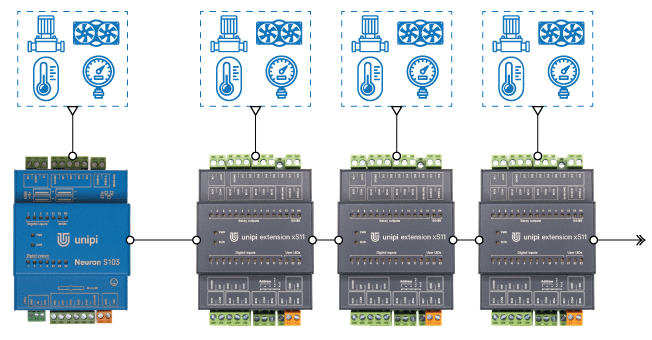
Alternatively, you can use the extension modules to make inputs and outputs accessible in installations located away from the central distribution box with the PLC (ie. next room, another storey etc.). You can simply install the extension in the remote location, connect all devices you want to control or monitor, and then connect the extension to the PLC using only a pair of serial cables. This solution significantly decreases the amount of needed cabling, reducing the expenses considerably.
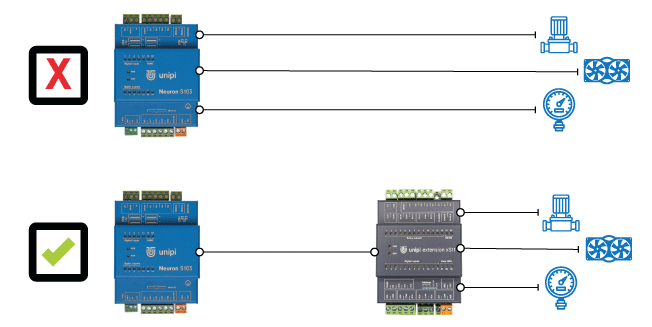
A tutorial for connecting extension modules to Unipi PLCs, a description of their functionality and other info, can be accessed either in the technical documentation or on the Unipi Knowledge Base.
